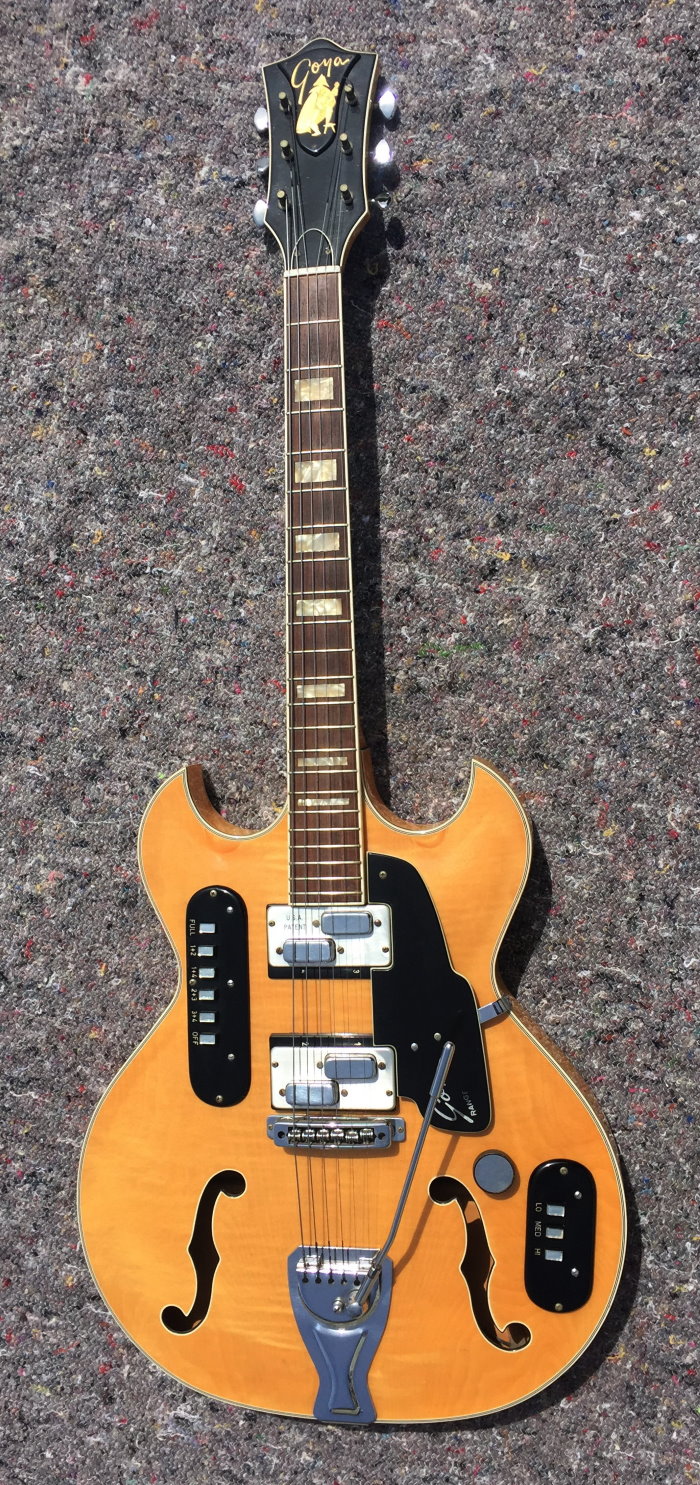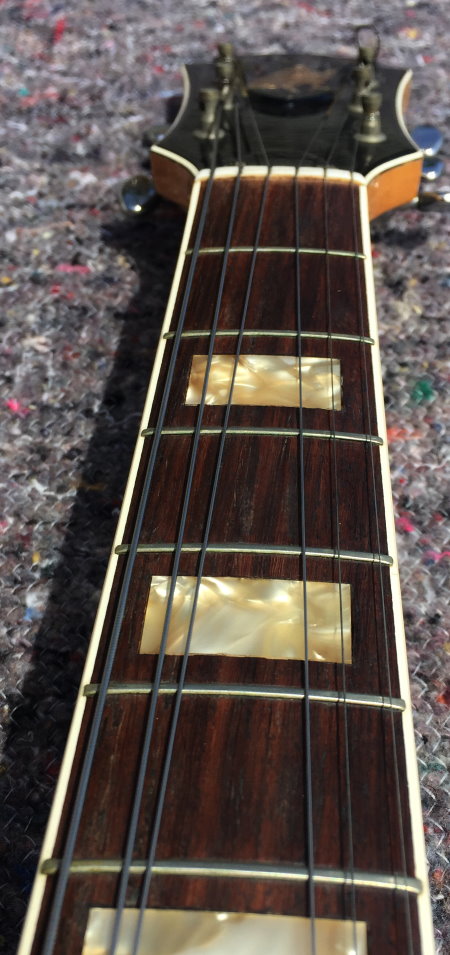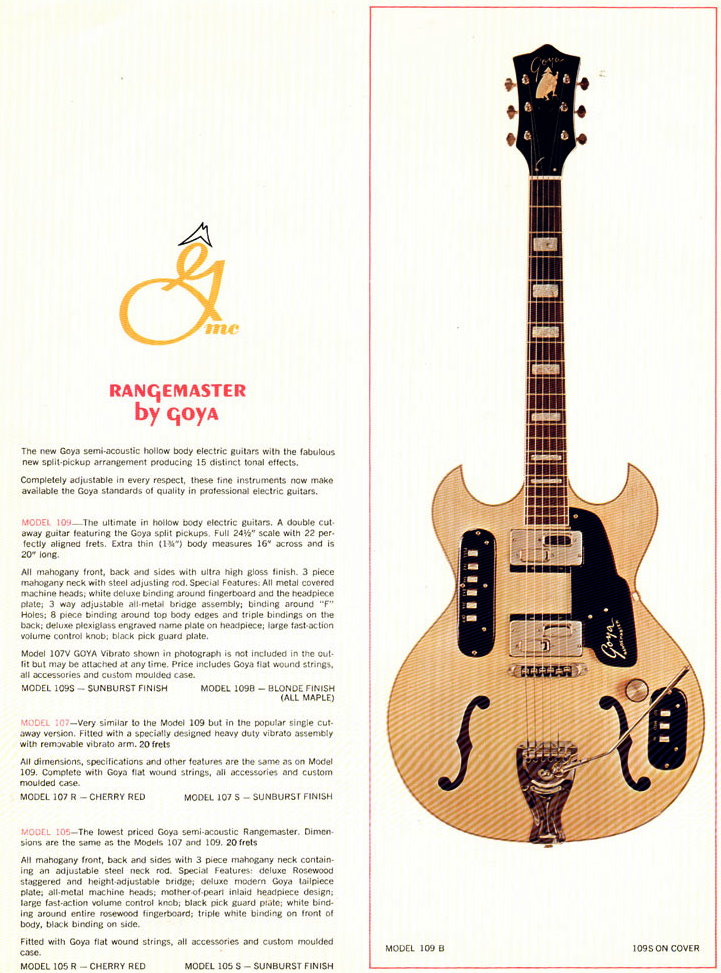


















67's GOYA RANGEMASTER 109B Natural Blonde-Thinline body, OHC
Stunning conditions Double Florentine-cut version of the Rangemaster series, with a all flammed blond finish. It was made around 1966-67 in Italy At the time Goya was still a Swedish company. Extremely light weight and in excellent shape. It plays clean, with a straight neck Rosewood fingerboard and full original 22 frets. There is the full array of Italian accordion controls. The pickups are “split” and numbers 1+2 for the bridge and 3+4 for the neck. The choices are: are: All, 1+2, 1+4, 2+3, 3+4, Off. There is also a big silver dollar sized volume control and high/medium/low tone buttons. I generally play just the neck or bridge settings or all - but the combinations are fun to experiment with. The neck pickup is full sounding as one would expect, the bridge pickup is quite bright,. The three tone buttons go from bright to dark.The wiring is all clean and all buttons work as they should. The body is made from maple with an extremely high gloss finish and the neck is mahogany with a slim “C” profile. Scale is 24.5 inches. The body is thin - 1 3/4 inches thick, and is 16 inches across at the widest. The fretboard is rosewood. The alternating black and white binding around the body is a really lovely touch and is fully intact and in nice shape. Original Van Ghent tuners stay in tune. Comes with Original " Polverini" Made in Italy Hard Case.

Goya 1966 guitar catalog. Page 4. Details of
three members of the semi-acoustic Goya Rangemaster series, models: 105, 107 and
109, with the 109B (blonde finish) pictured. The name Rangemaster relates to the
wide tonal range of the pickups; each consists of two separate coils covering
two strings only. These guitars were made in Italy by accordion manufacturers
Polverini, then badged Goya. The main difference between these three guitars was
the body shape: the 105 having a single Venetian cutaway (see next page), the
107 a single Florentine cutaway, and the 109 a double Florentine cutaway. Only
the 109B was available with blonde finish, and this had a maple front back and
sides, rather than the mahogany of all other finishes.
The January 1966 US list price for either the blonde or sunburst finished model
was $399. This was a significant amount; actually $9 more than the very
well-regarded Gibson ES-175D.